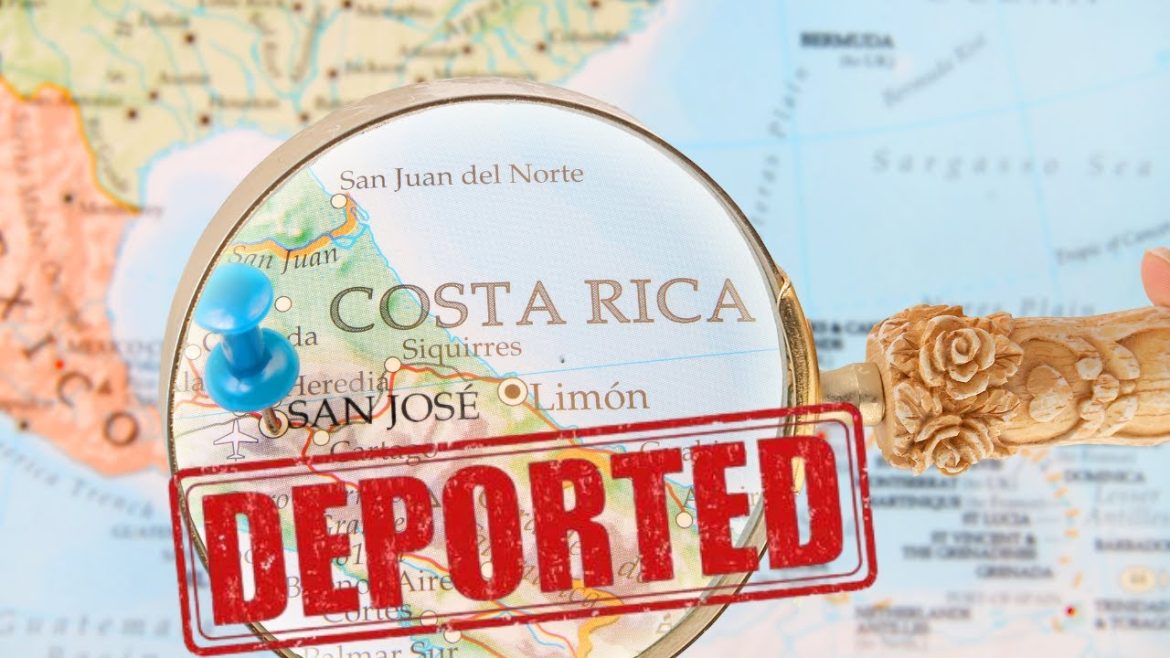In a move that might echo across the tranquil tropics of Central America, the United States is contemplating an expansion of Panama’s aggressive deportation regimen to its neighbor, Costa Rica. This proposal emerges as a pivotal strategy to curb the surge of migrants trekking northward, aiming to fortify U.S. borders indirectly yet substantially.
From Panama’s Playbook to Costa Rican Strategy
Panama, known for its robust handling of migration flows through the perilous Darien Gap, has set a precedent that the U.S. finds worth replicating. Its stringent deportation policies and tight border controls have been somewhat effective in managing the migration influx, particularly from South America and beyond. With Panama’s example as a backdrop, U.S. officials are now eyeing Costa Rica—a country celebrated for its rich biodiversity and peaceful ethos—as the next frontier in this expanding geo-political chess game.
Strategic Moves in Border Control
The consideration to extend Panama’s deportation approach to Costa Rica aligns with broader U.S. efforts to manage migration through international partnerships. This strategy involves bolstering the capabilities of Central American nations to handle migrant flows within their territories, thereby reducing the pressure on U.S. southern borders. The plan suggests a blend of capacity-building initiatives, financial aid for border control enhancements, and legal frameworks tailored to expedite the processing and deportation of undocumented migrants.
Why Costa Rica?
Costa Rica, with its stable democracy and relatively robust economic framework, presents a strategic point in the migratory route that many take towards the U.S. Unlike its Central American neighbors, Costa Rica has been more of a transient corridor rather than a source country for large-scale migration. However, its growing role as a transit nation brings it into the spotlight for U.S. policy planners seeking to mitigate migration before it reaches the congestion points at the U.S. border.
Potential Impacts and International Responses
Expanding Panama’s deportation strategy to Costa Rica is not without its critics. Human rights groups and immigration advocates argue that such policies undermine the asylum rights of individuals fleeing violence and poverty. The plan could also strain U.S.-Costa Rica relations, historically cordial but now tested by differing views on migrant treatment and refugee rights.
Moreover, the practical implementation of such a strategy raises questions about efficacy. Costa Rica’s own immigration system is under pressure, grappling with an influx from Nicaragua and Venezuela. Balancing humanitarian obligations with strict deportation policies may challenge Costa Rica’s capacities and ethical commitments.
On the Ground in Costa Rica
Locally, the reaction is mixed. Some Costa Ricans fear that stricter immigration controls could dampen the country’s image as a beacon of peace and environmental stewardship in Latin America. Others, concerned about jobs and national security, quietly applaud the potential for more stringent controls.
Looking Ahead
As discussions continue and policy outlines take shape, the eyes of many in Central America and the U.S. are fixed on how this expansion could redefine the migration landscape. The U.S. administration is treading a tightrope of diplomatic engagement, attempting to strengthen borders while maintaining the goodwill of its Central American allies.
In essence, the consideration to replicate Panama’s deportation policies in Costa Rica is a testament to the complex dance of diplomacy, security, and humanity that defines the modern migration saga. As this plan unfolds, it will undoubtedly influence the regional dynamics and the lives of thousands looking towards the U.S. with hopes for a better future.
As the U.S. considers expanding Panama’s deportation framework to Costa Rica, the move signals a new chapter in the intricate narrative of North American immigration policy. Striking a balance between control and compassion, between sovereign rights and international duties, may set a precedent not just for the Americas, but for migration policy worldwide.

